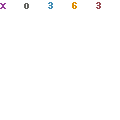Two films, two perspectives, two levels of quality
 We missed 'em at the movies but caught up with Clint Eastwood's dual Iwo Jima movies this week thanks to the miracle of Netflix.
We missed 'em at the movies but caught up with Clint Eastwood's dual Iwo Jima movies this week thanks to the miracle of Netflix.Flags of Our Fathers is a fairly interesting jaunt into the story of the legendary photo of the U.S. flag being raised at Mount Suribachi. The reality doesn't quite match the legend, and the movie does a nice job of showing the difference - too nice, perhaps. Scenes of a war bonds fund-raising drive built around the famous picture are jarringly intercut with graphically violent flashbacks of the 35-day battle for the strategically important rock in the Pacific Ocean.
It was almost as if director Eastwood were trying to present the visual equivalent of post-traumatic stress syndrome, the way a loud noise in a states-side scene triggers a flash cut to a pitched battle scene on the island. It wasn't easy to watch at times, and in the end the best thing about the film was how it set a context for the far superior Letters From Iwo Jima.
So often in "action" flicks, the enemy is simply a cardboard cutout for the hero to have something to shoot at. The value of these two movies is that they stand on their own as viewing experiences, but they intersect at several key places so that you gain an understanding of what the same incidents meant to both the U.S. and Japanese sides.
Letters From Iwo Jima puts a very human face on the cardboard cutouts in the companion film. In fact, the first 44 minutes is spent meeting the Japanese men who fought on the island, seeing how they prepared militarily and emotionally for the inevitable battle. As a result, when the graphic violence comes, it is part of the story rather than jarring and gratuitous, as it seemed in Flags.
Seeing the films on consecutive nights is an interesting intellectual exercise, and each gains something in comparison with the other. For example, when the Americans land, the Japanese hold their fire until the beach is swarming with troops, and the result is a one-sided bloodbath that gives the Japanese a victory in the first skirmish for the island. In one movie the scene is suspenseful for its mystery - what are they waiting for? - and in the other for the tension between the troops' desire to start shooting and the general's insistence to hold fire as long as possible.
Together, the two films are a powerful story about war and the individuals who are forced to wage it. Each film can stand alone as well, and I have no doubt that Letters From Iwo Jima will be the one that lingers longer. It's not that Flags of Our Fathers is a bad movie - it's that Letters From Iwo Jima is a masterpiece, so Flags suffers in the comparison.
Labels: Clint Eastwood, Flags of Our Fathers, Letters from Iwo Jima



0 Comments:
Post a Comment
Subscribe to Post Comments [Atom]
<< Home